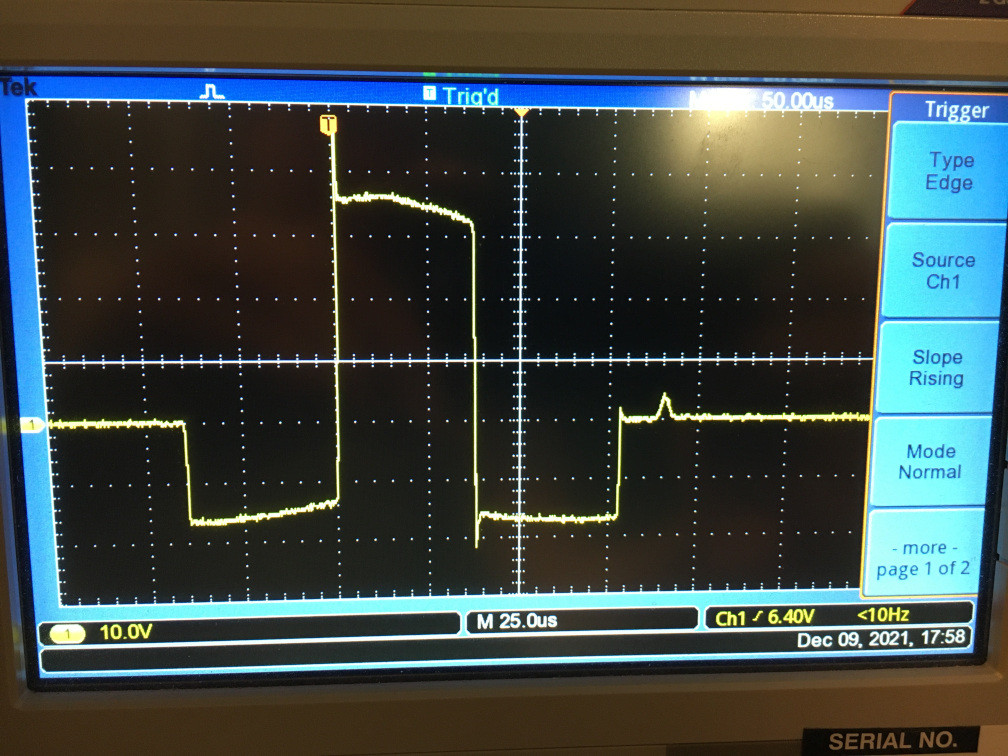I have made this simple circuit:
In response to a rapidly changing magnetic field (pulse), the LED blinks.
An example of the pulse is shown below:
Now I would like to have a circuit with 2 LEDs so that only one of the LEDs blinks in response to a pulse like the one shown on the picture above and only the other LED blinks in response to a pulse of the reverse polarity - i.e. as the pulse above, but with the polarity flipped, so it first go positive, then negative and then positive again. The amplitude of the pulses can vary from approx %50 of the shown pulse to 200% of the shown pulse.
Is it possible using only a few more simple components? That is, not adding something like a microcontroller and an external power supply.








